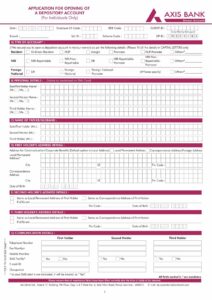Leveraging a standardized form offers several advantages. It ensures all necessary information is provided, reducing back-and-forth communication with the financial institution. This simplified process saves time for both the account holder and the bank. Furthermore, a formal request helps maintain a clear record of the closure, protecting both parties involved. It can also facilitate a smoother transition, especially when transferring remaining balances to other accounts.
Understanding the components and benefits of a structured closure request is crucial for anyone considering terminating a bank account. The following sections will delve into the specific elements commonly found in these forms, offering practical guidance and examples for a seamless account closure experience.
Key Components of a Bank Account Closure Request
A well-structured account closure request typically includes several key components to ensure a smooth and efficient process. These components provide the financial institution with the necessary information to process the request accurately and promptly.
1. Account Holder Information: Full legal name, current address, phone number, and email address are essential for verification and communication.
2. Account Number: The specific account number being closed is crucial. Providing this information accurately prevents delays and errors.
3. Account Type: Specifying the type of account (checking, savings, etc.) helps the bank locate the correct account quickly.
4. Reason for Closure: While not always mandatory, providing a reason can assist the bank in improving its services. Common reasons might include relocation, switching to a different institution, or dissatisfaction with services.
5. Closing Date: Specifying a desired closing date helps align expectations. However, the actual closing date might vary based on the bank’s processing time.
6. Forwarding Address (Optional): Providing a forwarding address ensures any residual mail related to the closed account reaches the account holder.
7. Instructions for Remaining Funds: Clear instructions on how to handle the remaining balancetransfer to another account, issuance of a check, or cashare essential to avoid complications.
8. Signature: A physical or digital signature authorizes the closure request and confirms the information provided is accurate.
Accurate and complete information facilitates efficient processing and minimizes potential issues during account closure. Careful attention to these components ensures a clear and straightforward process for all parties involved.
How to Create a Bank Account Closure Request
Creating a formal request to close a bank account ensures a clear and efficient process. While many institutions offer pre-printed forms, understanding the essential elements enables one to draft a comprehensive request even without a template.
1. Contact Information: Begin by clearly stating the account holder’s full legal name, current address, phone number, and email address. This information is crucial for verification and communication.
2. Account Details: Specify the account number and type (e.g., checking, savings). Accurate account details are essential for proper identification and processing.
3. Closure Request: Explicitly state the intention to close the account. A simple, direct statement such as “This letter serves as a formal request to close the following account” suffices.
4. Reason for Closure (Optional): While not always mandatory, providing a reason can be beneficial. Common reasons include relocation, switching institutions, or account consolidation.
5. Closing Date (Optional): A requested closing date helps manage expectations. However, acknowledge that the actual closing date might vary based on the bank’s internal procedures.
6. Instructions for Remaining Funds: Clearly specify how to handle the remaining balance. Options typically include transferring funds to another account, issuing a check, or cash disbursement. Provide necessary details such as the receiving account number if applicable.
7. Forwarding Address (Optional): If desired, include a forwarding address for any residual correspondence related to the closed account.
8. Signature and Date: Conclude the request with a signature and the date. This formalizes the request and confirms the provided information.
A well-crafted request includes all necessary information, facilitating a smooth and efficient closure process. Accuracy and completeness minimize potential delays and ensure a clear understanding between the account holder and the financial institution. Maintaining a copy of the request for personal records is recommended.
Utilizing a standardized structure for account closure requests provides a clear and efficient pathway for terminating banking relationships. Understanding the key componentsaccount holder details, account specifics, closure instructions, and fund disbursement directivesempowers individuals to navigate this process effectively, minimizing potential complications and ensuring a smooth transition. A well-crafted request, whether utilizing a pre-existing template or drafted independently, contributes significantly to a seamless closure experience.
Effective account management necessitates understanding the procedures involved in various banking operations, including account closure. Proactive planning and clear communication with financial institutions safeguard against potential issues and contribute to a positive banking experience. By utilizing available resources and adhering to established procedures, individuals can manage their financial affairs with greater control and efficiency.


